Viking Hairstyles: More Than Just Braids and Beards | A Modern Guide
Echoes of the North: Unraveling the True Story of Viking Hairstyles
When you hear the term “Viking hairstyles,” your mind likely conjures images of rugged warriors from television shows, sporting wild, unkempt manes, and massive beards. While these portrayals are visually dramatic, they often miss the rich complexity and sophistication of authentic Norse grooming. The reality is that Viking hairstyles were far more than just battlefield practicality; they were powerful statements of identity, status, freedom, and even personal hygiene. Far from being unruly barbarians, the Vikings took considerable pride in their appearance. Archaeological finds across Scandinavia have unearthed not rustic tools, but intricately carved combs, tweezers, and ear spoons, suggesting a culture that valued meticulous grooming.
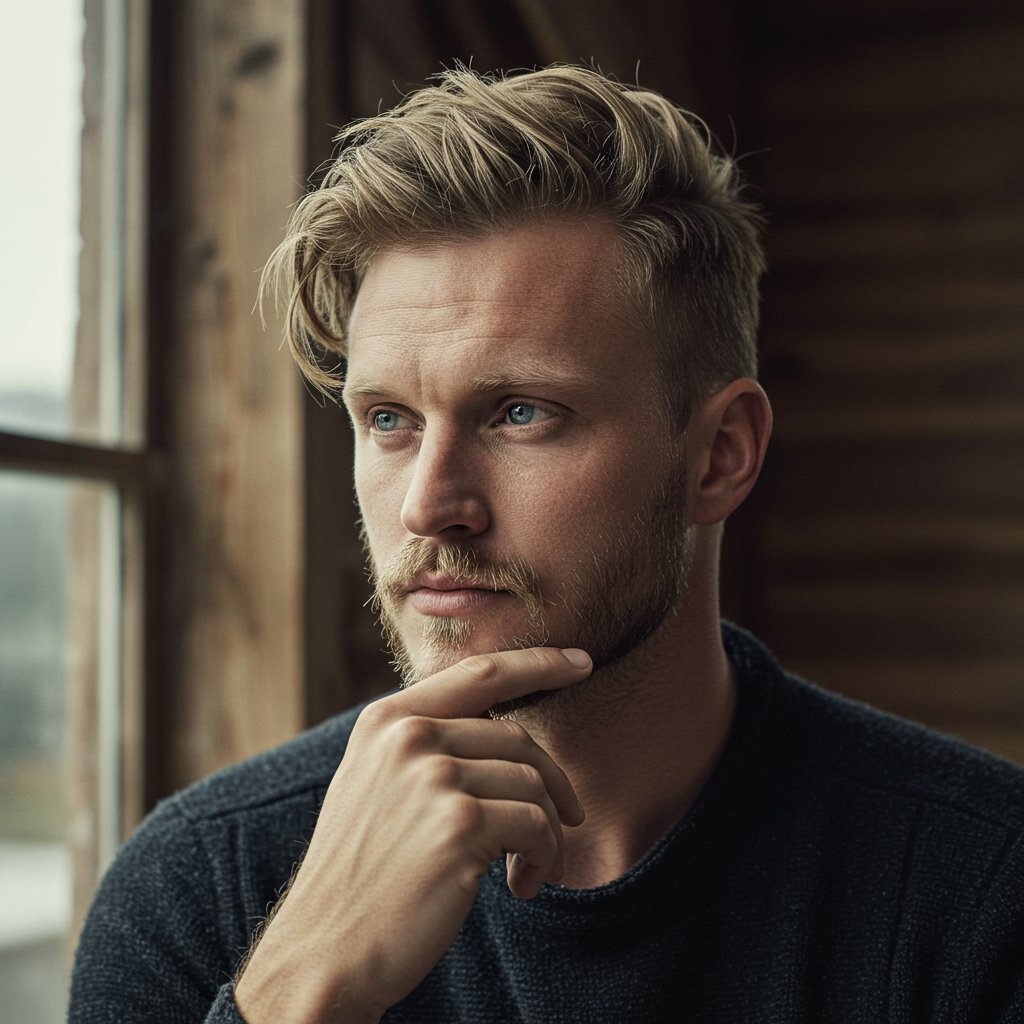
This guide delves beyond the stereotypes to explore the diverse and fascinating world of historical Viking hairstyles and how they can be adapted for the modern era. We will uncover the truth behind the iconic undercut, decode the language of complex braids and knots, and appreciate the symbolism of a long, flowing mane. Whether you’re looking to connect with your heritage, make a bold style statement, or simply admire the timeless appeal of these northern aesthetics, you’ll discover that Viking hair is a versatile and meaningful form of self-expression. It’s a tradition where strength meets artistry, and history is woven into every strand. Professional hair salons today are seeing a resurgence in these styles, skillfully adapting ancient looks for contemporary tastes.
The Historical Truth: Grooming, Status, and Society
Contrary to the brutish image often portrayed in media, Vikings were remarkably well-groomed. An Anglo-Saxon cleric, John of Wallingford, even complained that the Danish Vikings were too popular with English women due to their habits of combing their hair daily, bathing weekly, and changing their clothes regularly. This obsession with cleanliness and appearance was deeply ingrained in their culture. Hair was not just hair; it was a canvas that communicated a person's place in the world. Long, healthy hair was a sign of a free man or woman, a symbol of virility and honor. In contrast, thralls, or slaves, often had their heads shaved to signify their low status, a practice that made the distinction immediately visible.
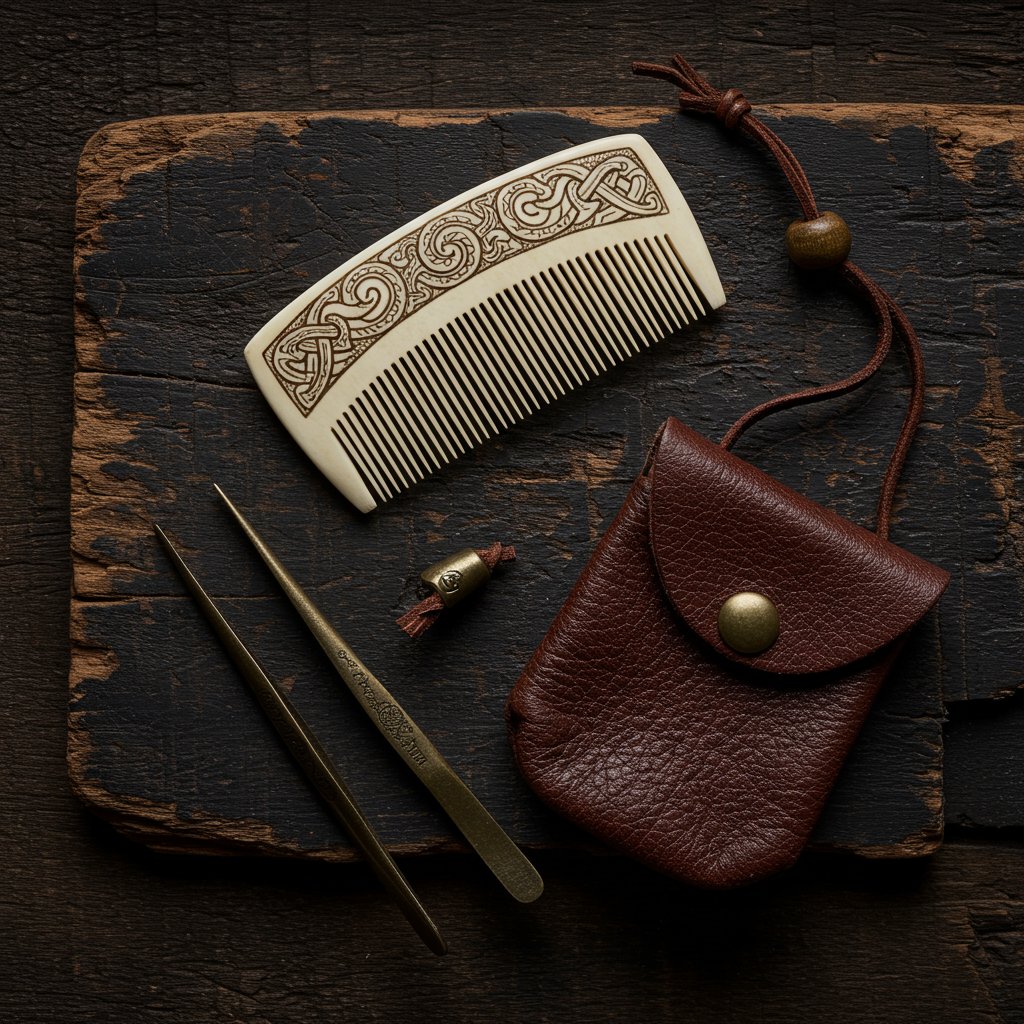
The Comb: A Viking's Essential Tool
Archaeological sites are rich with combs crafted from bone, antler, or wood. These weren't simple, functional items; many were beautifully decorated with geometric patterns or animal motifs. The prevalence of these combs indicates that detangling, cleaning, and styling hair was a daily ritual. Keeping hair neat wasn't just about aesthetics; it was also practical. Clean, braided hair was less likely to become infested with lice, a common problem in the era. For warriors, keeping hair tied back and out of their eyes was a matter of life and death in combat. Therefore, grooming was a fusion of cultural pride, social signaling, and pragmatic necessity.Hair as a Social Signifier
Different styles could signify various social roles or achievements. A young, unmarried woman might wear her hair long and loose, while a married woman would typically have it braided and pinned up. A warrior might adopt a specific type of braid or cut to appear more intimidating or to honor a victory. The beard was equally important for men, often braided or adorned with beads to display wealth and status. The intricate care required for these styles demonstrated that the individual had the time and resources to dedicate to their appearance, further solidifying their social standing. These traditions show that for the Vikings, hairstyling was a deliberate and meaningful act, far from the accidental, wind-swept look of popular fiction.The Iconic Undercut: Shaved Sides, Long Top
Perhaps the most recognized and emulated of all Viking hairstyles is the undercut, often referred to as the “Norse” or “Dane” cut. This style typically involves hair kept very long on top, while the back and sides are shaved close to the skin. This striking contrast is both visually impactful and intensely practical. Historical sources, including the 11th-century text Encomium Emmae Reginae, describe Danish warriors with hair “shorn to the skin” but with a long fringe or top section. This wasn't a punk-rock invention of the 20th century; it was a functional and fashionable statement of the Viking Age.
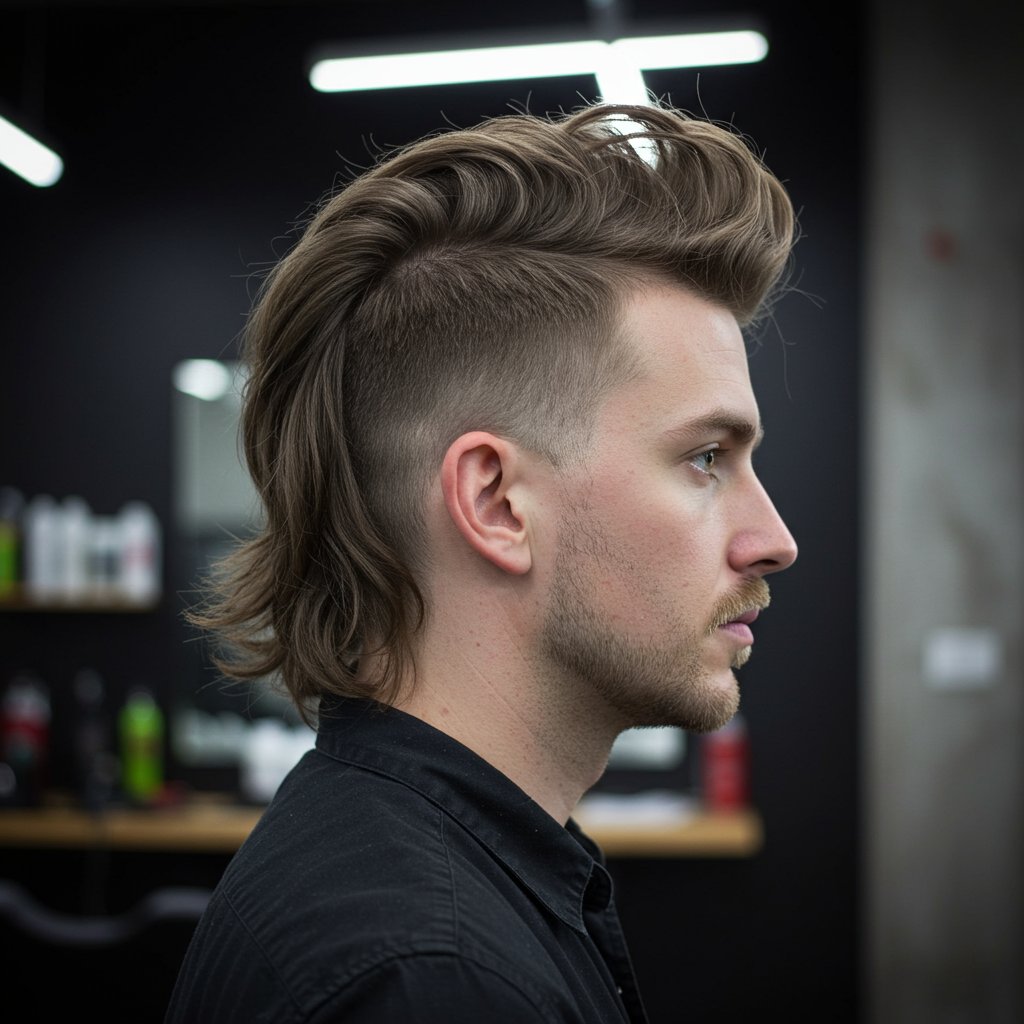
Form Meets Function
The practicality of the undercut for a warrior is undeniable. Shaved sides and back reduced the risk of hair being grabbed by an opponent in close combat. It also made wearing a helmet more comfortable and less hot during a battle. The long hair on top could then be tied into a topknot or braided, keeping it securely out of the eyes and off the neck. This dual-purpose design—fierce in appearance and functional in practice—is a hallmark of Viking culture. It allowed a warrior to maintain the cultural significance of long hair while adapting it for the rigors of their lifestyle.Modern Interpretations
Today, the Viking undercut remains a popular choice for its bold and edgy aesthetic. Modern stylists have adapted it in countless ways. Some prefer a sharp, faded transition from the shaved sides to the long top, while others opt for a more abrupt, disconnected look. The length on top can vary from a few inches, styled with pomade for a sleek look, to a foot or more, perfect for tying into a dramatic topknot or a complex series of braids. This versatility allows the style to be customized to suit individual face shapes and hair types, making it a timeless look that continues to connect the past with the present.Beyond the Single Braid: Diverse Plaiting and Knotwork
Braids are synonymous with Vikings, but the reality is far more intricate than a simple three-strand plait. Norse men and women were masters of complex braiding and knotwork, using their hair to create elaborate and symbolic designs. These styles were not only beautiful but also served to keep long hair managed and clean during daily labor, long sea voyages, and fierce battles. The complexity of a braid could signify age, marital status, or social standing, turning hair into a living tapestry of an individual's life story.
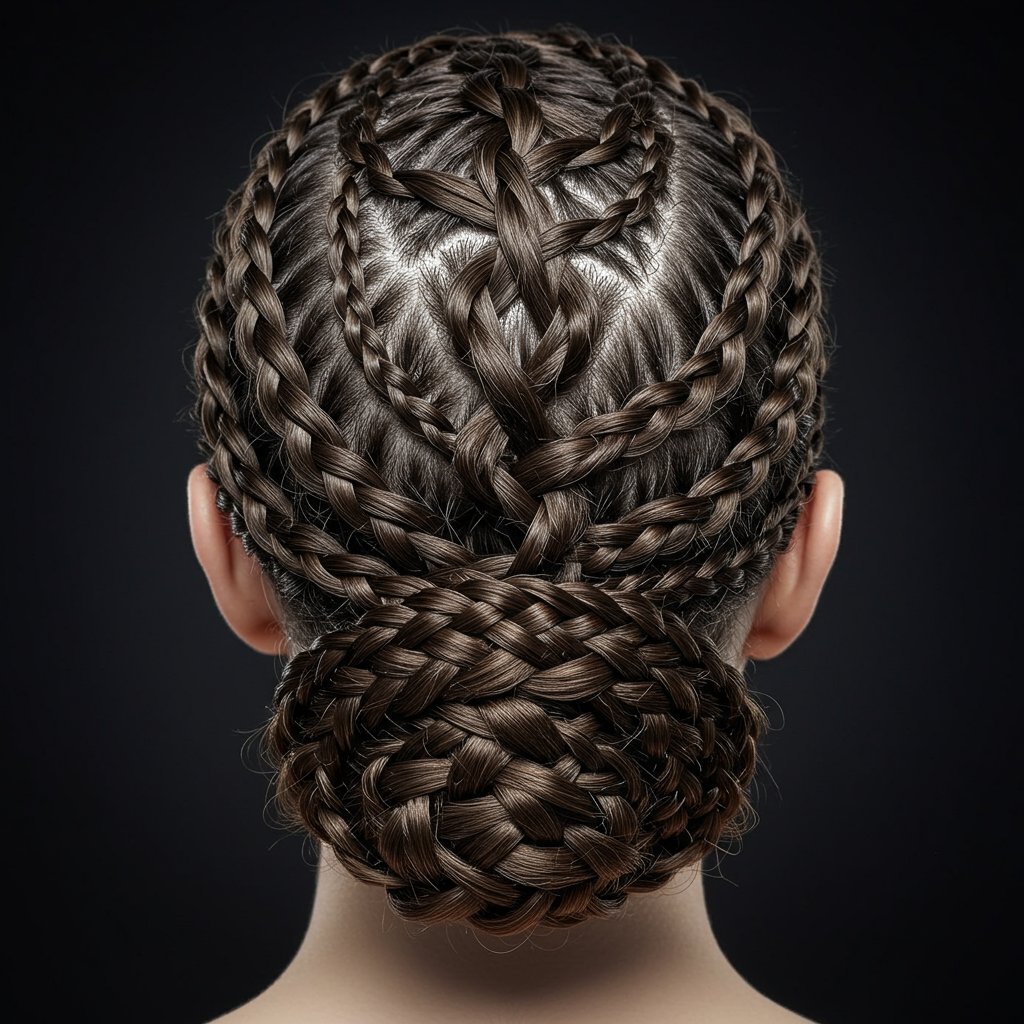
Warrior Braids and Shieldmaiden Styles
For men, braids were often tight and functional. A common style involved multiple small braids pulled back from the hairline, sometimes converging into a single larger braid down the back. This kept hair secure under a helmet and out of the face. Beard braids were also common, often woven with two or three strands and sometimes adorned with metal rings. For women, especially the legendary shieldmaidens, hairstyles needed to be equally practical for combat. Styles like the crown braid, where braids are wrapped around the head, or a series of tight, parallel braids similar to modern cornrows, would have been effective at keeping hair contained and protected.Intricate Knots and Symbolic Weaves
Beyond simple plaits, Vikings incorporated intricate knots inspired by their famous artistic traditions, seen in their metalwork and wood carvings. These knots were not just decorative; they were believed to hold symbolic power or meaning. A “warrior’s knot” might be tied before a battle for strength and protection. Women’s styles often featured elaborate updos with interwoven braids and knots, pinned with decorative bone or metal pins. Achieving these looks requires skill and patience, and modern stylists specializing in historical or fantasy hairstyles can recreate these stunning designs, offering a unique look that is both a work of art and a nod to a powerful history.The Half-Up Top Knot: A Warrior's Practicality
While complex braids were common, another simpler yet equally effective style was the half-up top knot. This look, often associated with the undercut, involves gathering the long hair from the top section of the head and tying it into a tight knot or a looped ponytail high on the back of the head. The rest of the hair, if any, is left to hang loose or is shaved. This style offered the ultimate in practicality for a warrior: it instantly cleared the field of vision and secured the hair in a way that was less likely to come undone during strenuous activity.
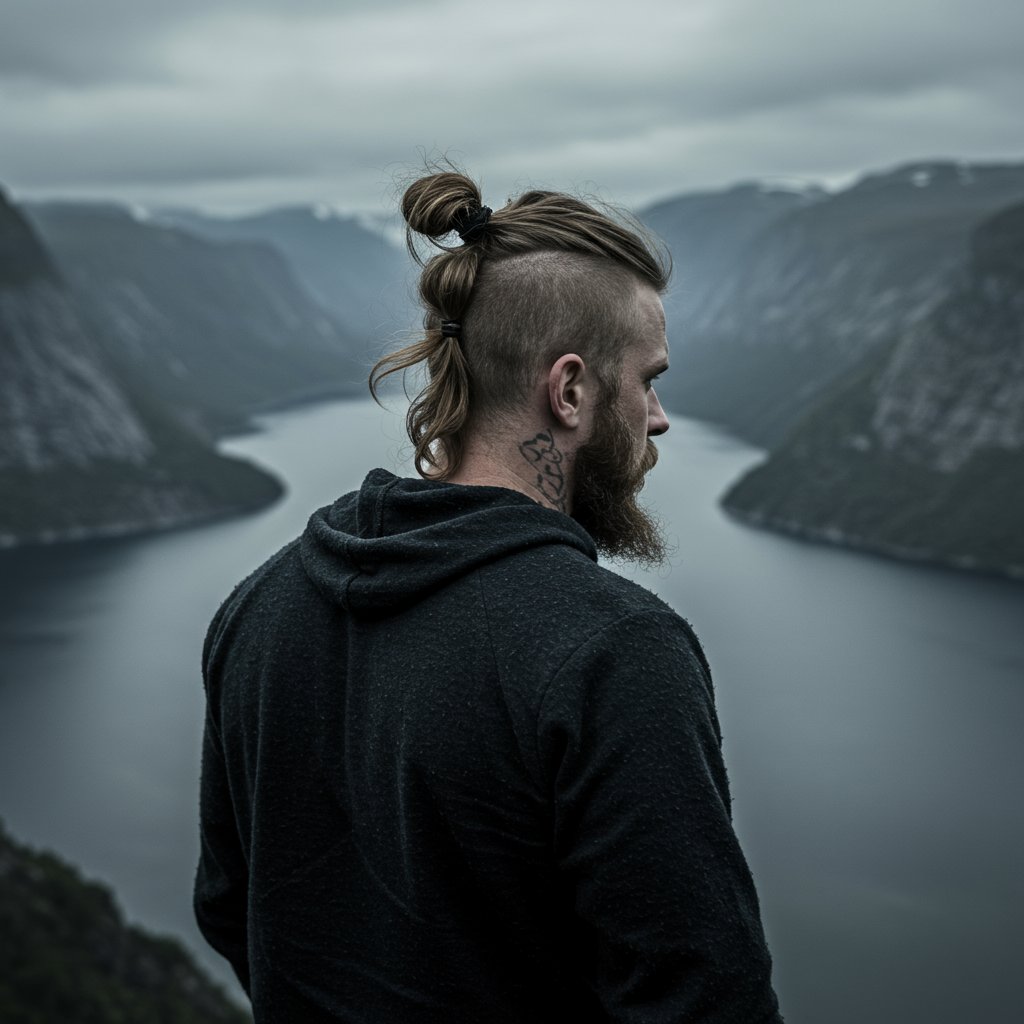
Simplicity and Strength
The beauty of the top knot lies in its simplicity. It could be done quickly without the need for intricate weaving, making it an ideal choice for life on the move. The resulting look is fierce and focused, emphasizing the face and creating an imposing silhouette. It's a no-nonsense style that communicates readiness and intent. Historical depictions and sagas suggest that this was a common way for warriors to wear their long hair, especially when not braided. It combines the cultural value of long locks with the pragmatic need for control.The Modern Man Bun's Ancestor
The modern resurgence of the “man bun” and top knot owes a great deal to this historical Viking style. Today, it’s a popular choice for men with long hair or those sporting an undercut. It's versatile enough for the gym, the office, or a night out. To achieve an authentic Viking look, the knot should be worn high on the head, and the hair should be pulled back tightly. For an even more rugged appearance, allow some texture and flyaways rather than aiming for a perfectly sleek finish. It’s a powerful and low-maintenance way to channel a warrior spirit in the 21st century.Long and Flowing: The Power of Natural Hair
Not every Viking hairstyle involved intricate braids or sharp undercuts. For many, the ultimate symbol of freedom, health, and status was simply long, well-maintained hair, worn loose and flowing. In Norse society, where slaves had their heads shorn, a full head of long hair was an immediate and clear declaration of one's free status. For both men and women, long hair was a source of pride and was seen as a sign of virility in men and fertility in women. It was a natural crown that required care and attention to look its best.
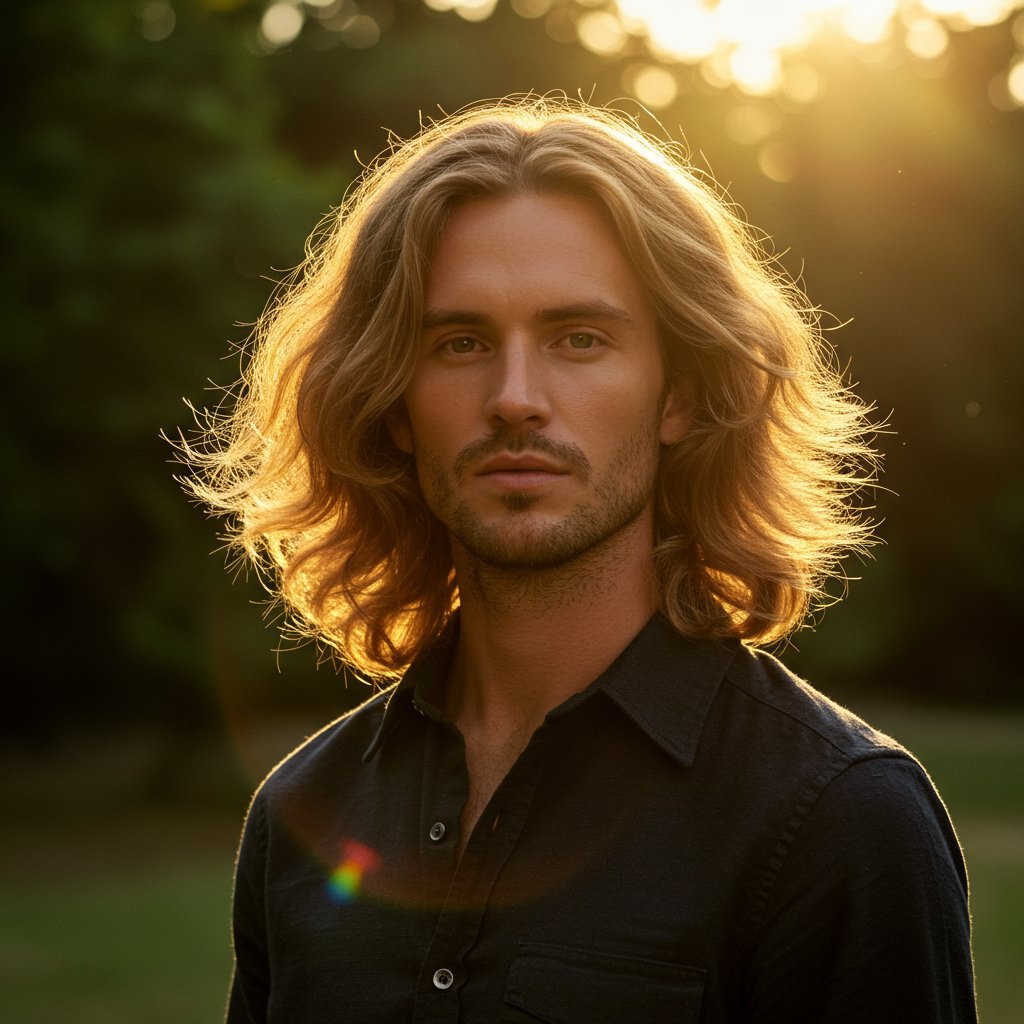
A Symbol of Freedom and Vitality
The sagas are filled with descriptions of heroes and heroines with magnificent hair—blonde, red, or dark—that flows like a banner in the wind. The Norse god Thor was famous for his red hair and beard, and the goddess Sif was known for her beautiful golden locks. This cultural reverence for long hair meant that keeping it healthy and clean was paramount. Regular washing and combing were essential. Vikings would have used natural oils, possibly from plants or animal fats, to condition their hair and keep it from becoming brittle in the harsh northern climate.Achieving the Look Today
For those looking to embrace this simpler, more natural Viking aesthetic, the key is health and length. Growing your hair out requires patience and a good care routine. Regular trims at a professional salon are essential to remove split ends and maintain shape. Using high-quality, sulfate-free shampoos and nourishing conditioners will keep the hair strong. For an authentic touch, incorporate natural hair oils like argan or jojoba oil to add shine and manageability. This look is about celebrating the natural texture and beauty of your hair, proving that sometimes the most powerful statement is the most simple one.Beards: The Other Half of the Viking Look
No discussion of Viking hairstyles is complete without paying homage to the beard. A beard was a non-negotiable symbol of masculinity and honor for a Norseman. To be beardless was to be seen as lesser, a boy rather than a man. Like the hair on their heads, Viking beards were not left to grow wild and untamed. They were styled, groomed, and decorated with the same care and intention.
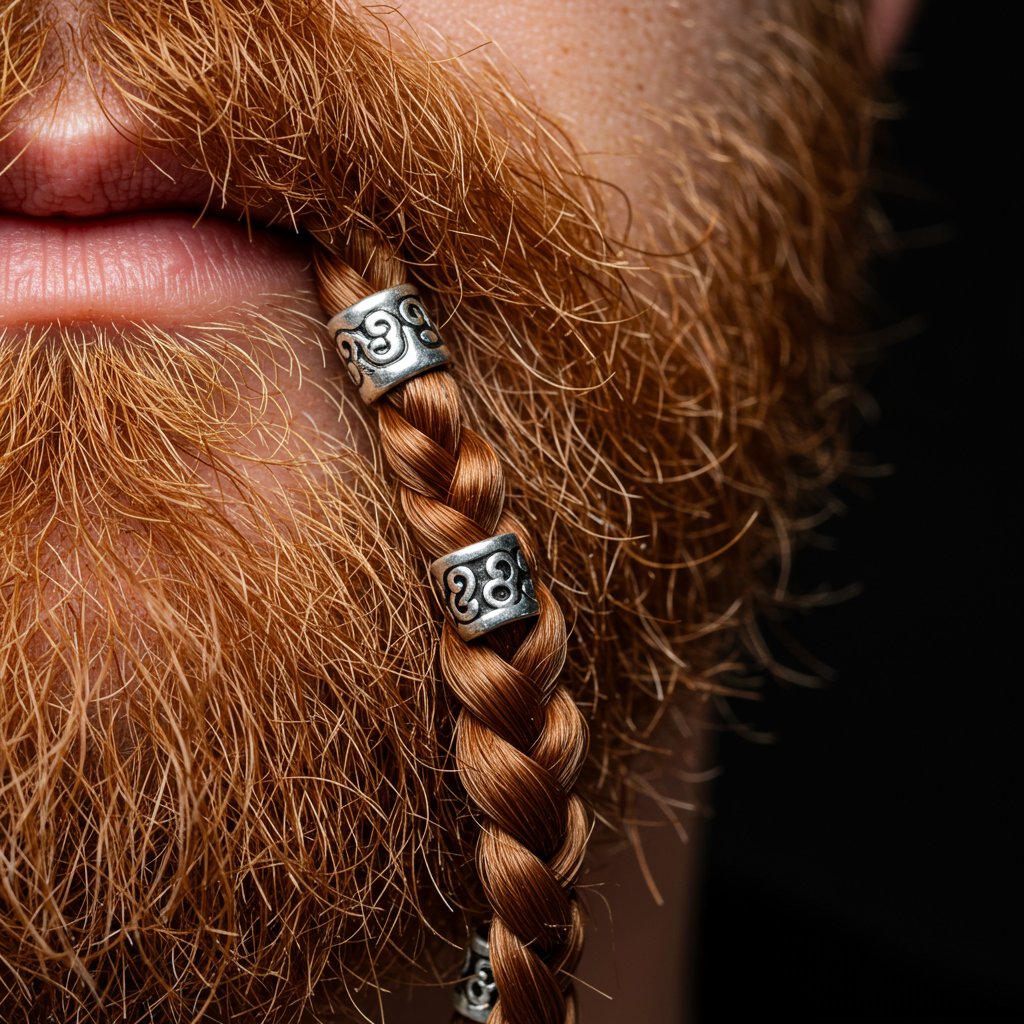
Styles of the Norse Beard
Variety was key. Some men preferred a full, robust beard, while others sported a more stylized look. The forked beard, where the beard is parted and grown into two distinct points, was a particularly striking style. Braiding was also extremely common. A man might have one or several small braids woven into his beard, often held in place with metal beads or rings. These braids were not only decorative but also practical, keeping the beard from getting tangled or caught in armor during a fight.Grooming and Adornment
Just as they carried combs for their hair, Vikings likely had smaller combs specifically for their beards. Keeping the beard clean and neat was part of the daily grooming ritual. Beard oils, similar to those used for hair, would have been used to soften the hair and moisturize the skin underneath. The most distinctive feature of a Viking beard, however, was the adornment. Small, ornate beads made of silver, bronze, glass, or bone were threaded onto the braids. These weren't just decorative; they were a display of wealth and success. A warrior returning from a successful raid might add a new silver bead to his beard, a tangible symbol of his prowess.Accessorizing Like a Norseman: Beads, Rings, and Wires
Accessories were the final touch that elevated Viking hairstyles from practical to profound. These weren't just trinkets; they were expressions of wealth, status, and personal achievement. Both men and women used a variety of adornments to add flair and meaning to their braids, knots, and beards. These items were often finely crafted and served as a way to carry one's wealth on their person.
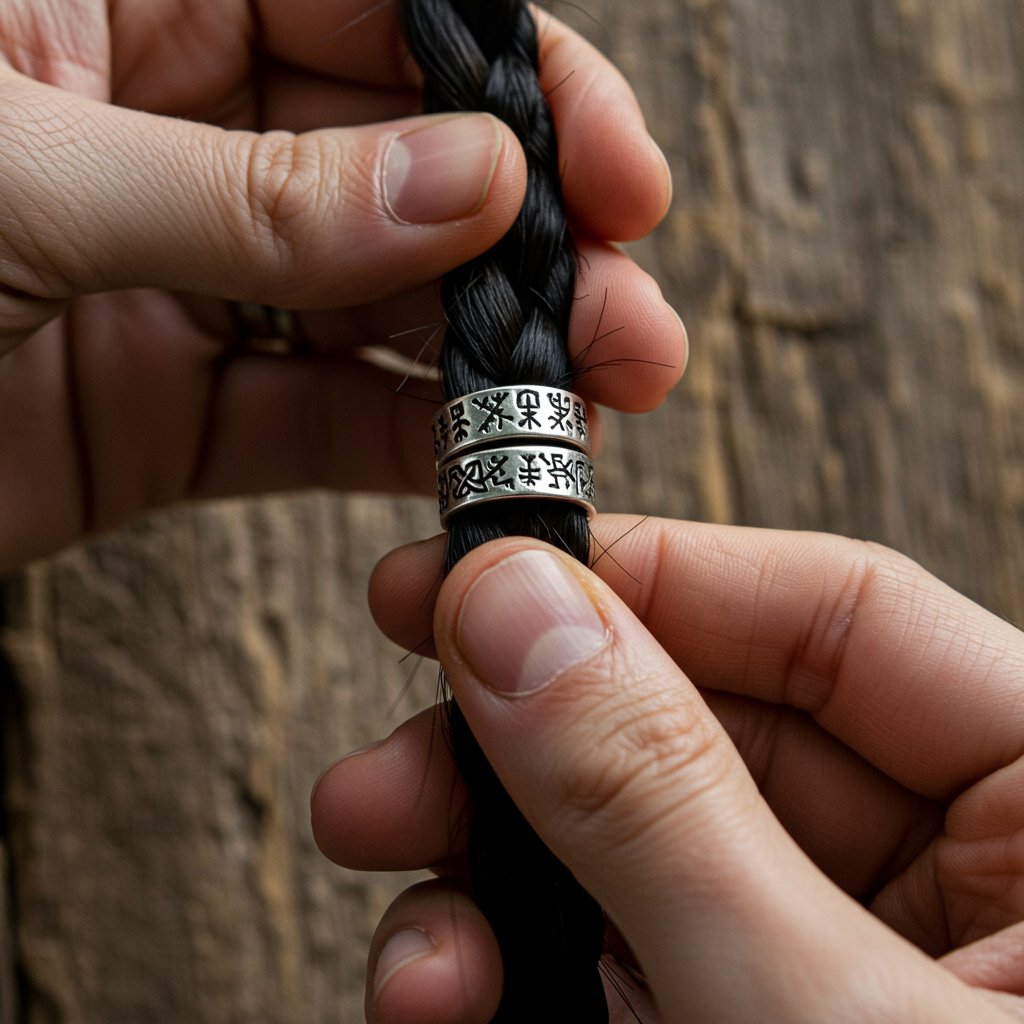
Beard Rings and Hair Beads
The most common accessories were beads and rings. These were typically made from metal—silver and bronze being the most prized—but also from colored glass, amber, or carved bone. They were designed to be threaded onto a thin braid of hair or beard. The intricate designs on these beads often mirrored the patterns found in Viking art, featuring knotwork, animal figures, or geometric shapes. A collection of silver beads in one's beard was an unambiguous sign of a successful and wealthy individual.Wires and Filigree
Another, more subtle form of decoration involved wrapping fine metal wires, usually of gold or silver, around sections of hair or braids. This technique, known as filigree, would catch the light and add a shimmering, almost magical quality to the hair. It required considerable skill to apply and was likely reserved for the Norse elite or for special occasions. These adornments transformed a simple hairstyle into a piece of jewelry, a personal treasure that was both beautiful and symbolic. Today, replicas of these beads and rings are widely available, allowing anyone to add a touch of authentic Norse detail to their modern Viking-inspired look.How to Achieve and Maintain Modern Viking Hairstyles
Bringing the powerful aesthetic of Viking hairstyles into the modern world requires a combination of the right cut, proper maintenance, and a little bit of styling prowess. Here are some professional tips to help you achieve your desired Norse look.
Find a Skilled Stylist
First and foremost, find an experienced stylist who understands these specific types of cuts, especially the undercut. Bring reference photos to your consultation and be clear about what you want. Discuss the transition for an undercut—do you want a gradual fade or a stark, disconnected line? A good stylist can advise on what will work best with your hair type, head shape, and lifestyle. They are crucial for establishing the foundational cut that you will then style at home.The Art of the Braid
If you want to incorporate braids, practice is key. Start with a simple three-strand braid and work your way up to more complex styles like fishtail or four-strand braids. There are countless online tutorials available. For tight, clean braids, it’s best to work with slightly damp or day-old hair, as freshly washed hair can be too slippery. A small amount of texturizing spray or light-hold pomade can provide grip and help control flyaways.Essential Products for Hair and Beard
Your toolkit should include a few key products. For beards, a high-quality beard oil is non-negotiable. It moisturizes the hair and the skin beneath, preventing itchiness and flakes. A beard balm can provide some hold for styling and shaping. For your hair, a sea salt spray is perfect for adding that rugged, textured look to long, flowing styles. For undercuts and top knots, a matte-finish pomade or clay will give you strong hold without a greasy shine. And of course, a good comb is as essential now as it was a thousand years ago.Viking Hairstyles FAQ: Your Questions Answered
Were Viking hairstyles the same for men and women?
While there were overlaps, styles often differed. Both men and women wore long hair and used braids. However, men were more likely to sport undercuts and styled beards. Married women typically wore their hair braided and pinned up in elaborate updos, while unmarried women might wear it long and loose or in simpler braids like two plaits.Did Vikings really have shaved heads and long beards?
Not typically a fully shaved head. The most historically supported style is the undercut (shaved sides/back, long top). A completely shaved head was associated with thralls (slaves), so a free Viking would have avoided it. The long, well-groomed beard, however, was a very real and important symbol of manhood.How can I ask my barber for a Viking undercut?
Be specific. Ask for a “disconnected undercut.” Specify how high you want the shave to go (e.g., to the temples or higher) and tell them to leave the top section significantly longer (at least 4-6 inches to start). Showing them pictures of the exact style you want is always the best approach.What products are best for Viking braids and beards?
For braids, a texturizing spray or a light pomade helps with grip and taming flyaways. For beards, daily use of beard oil is essential for health and softness. A firm-hold beard balm or wax is needed to style braids or a forked beard. Use a dedicated beard wash instead of regular shampoo, which can be too harsh.Are Viking hairstyles professional for the workplace?
A modern, well-executed Viking hairstyle can absolutely be professional. A neat undercut with the top hair styled back, or a clean, tied-back top knot, can look sharp and sophisticated. A well-groomed, neatly trimmed beard is accepted in most professional environments today. The key is maintenance and intentional styling.How long does my hair need to be for a Viking style?
It varies. For a basic undercut with a short top knot, you’ll need at least 5-7 inches of hair on top. For intricate braids, you'll need significantly more—at least shoulder-length hair or longer. For a long, flowing style, patience is your best friend as you grow it out. For a substantial beard braid, you'll need at least 4-5 inches of growth from the chin.Forge Your Own Saga: The Enduring Legacy of Norse Hair
Viking hairstyles are a powerful reminder that grooming has always been a form of storytelling. Far from the one-dimensional barbarians of myth, the Norse people used their hair to communicate their identity, status, and connection to their culture. From the sharp, practical undercut and the intricate language of braids to the proud display of a flowing mane and a well-kept beard, these styles were a testament to a people who valued both strength and artistry.
The enduring appeal of these looks lies in their versatility and their potent symbolism. They speak of freedom, individuality, and a connection to a raw, untamed history. Whether you opt for a dramatic undercut, master the art of the warrior braid, or simply let your hair and beard grow with pride, you are tapping into a timeless legacy. To truly bring these ancient styles to life, consult an experienced stylist who can help you interpret these historical looks and forge a modern style that is uniquely your own.


